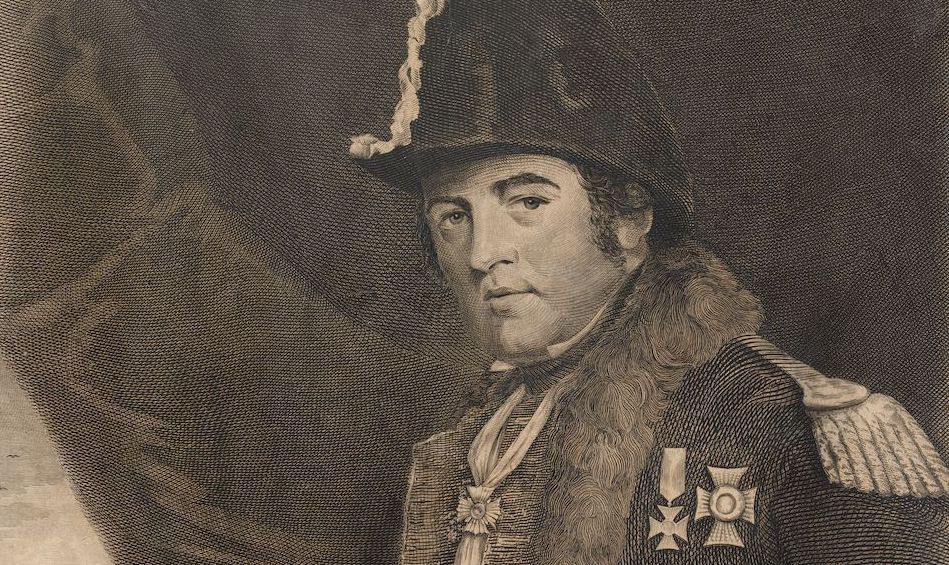John Franklin – Hero or Hard-Doer?
by Bonnie Mary Liston

John Franklin was the Lieutenant Governor of Tasmania from 1837 to 1843. Many things around Tasmania are named after him, or his impressive wife, Lady Jane Franklin. In Franklin Square he is depicted in statue, towering over the park on a plinth inscribed with his epitaph, composed by Lord Alfred Tennyson;
Not here! The white north hath
thy bones and thou
Heroic sailor soul
Art passing on thine happier voyage now
Toward no earthly pole
It’s always worth looking into the big men in our parks and squares, just to check if they actually deserve a statue. In the case of Franklin one cannot say he was “a great man” or “good at his job in any capacity” but he was at least, very interestingly bad at things. Franklin is best known outside Tasmania for his final expedition to the Arctic, often called “Franklin’s Lost Expedition” if that gives any indication of his success. In 1845 Franklin, his two ships – the Erebus and the Terror – and his crew of 128 men set off into the ice and disappeared forever.
That wasn’t Franklin’s first time in the Arctic. In 1819, Franklin led the Coppermine Expedition into the unexplored wastelands of northernmost Canada. Franklin’s achievements on this expedition include falling into a river and being rescued by his men; nearly starving to death and being rescued by the local indigenous peoples, and losing 11 out the 20 men in his party. The majority of men died from starvation but there was also murder and cannibalism.
The official story was Michel Terohaute, went “snow-mad”, killed three of his companions and fed them to the rest of the party, claiming the meat was from hunting. He then shot another crew member and had to be put down in self defence. However this account comes from John Richardson, the man who shot Terohaute. There was no proof that he had not murdered (and eaten) all five men himself and chosen Terohaute as a scapegoat. There were demands Richardson be tried for murder to which one crewman ominously replied “to tell the truth … things have taken place which must not be known.” The Navy took him at his word. No official investigation was launched and the incident was swept under the rug.
Franklin’s own account of the Coppermine expedition made no mention of cannibalism but spoke of eating lichen moss and the leather of their shoes. It became an instant bestseller and made Franklin quite famous. He was known affectionately as “the man who ate his boots,” preferable, one supposes to “the man who ate his men.”
The missing Franklin expedition was a high profile case. Many rescue expeditions were sent to find them. Even after official institutions had long given up, Lady Jane Franklin kept campaigning, fundraising and financing expeditions searching for her lost husband for the rest of her life. But no evidence of the missing men was ever found. Or rather, no evidence was ever accepted. In 1854, less than 10 years after the Franklin Expedition set off, Scottish explorer John Rae discovered the final fate of the missing men by being the first person to ask the local Inuit people if they knew anything. They told him that the two ships had become stuck in the ice and the men had abandoned them, attempting to seek safety on foot before eventually succumbing to cold, starvation, and cannibalism.
Rae’s account was quickly dismissed because racism, and because cannibalism did not fit with the heroic narrative already forming around Franklin and his expedition. However, as time and science marched on, Dr Rae and the Inuit were to be vindicated. In 1997 the remains of some crewmen were found on King William Island which showed very strong evidence of cannibalism – blade marks etched into skeletons and bones boiled and snapped open so the tasty marrow inside could be sucked out.
Franklin is credited many places, as the “Discoverer of the Northwest Passage.” This is either pity or a willful over-romanticisation of the facts. The only thing Franklin ever discovered was new and exciting ways for men to die in the Arctic and a couple of novel variations on ‘Sailor Soup.’
But who cares about the Northern Hemisphere? How did Franklin fare as our Governor? Not great. After six years he was “recalled to England” which is a diplomatic way of saying fired. This was not entirely Franklin’s fault. He had the misfortune to preside over the end of transportation and the end of free labour provided by convicts that many rich and powerful men relied on for their fortunes. No wonder he made enemies.
But perhaps Franklin’s lasting Tasmanian legacy was this: In 1838 he was the man who instituted the law forbidding the distillation of spirits in Tasmania which remained in effect for over 150 years until Bill Lark and his distillery in 1992. In some ways Franklin is responsible for the artisanal spirit boom we find ourselves in now. How does the statue of Franklin feel, looking over the gin cocktail tents at Franko Street Eats, knowing he was bent on their eradication yet responsible, in part for their very existence? They should put that on a plaque.

